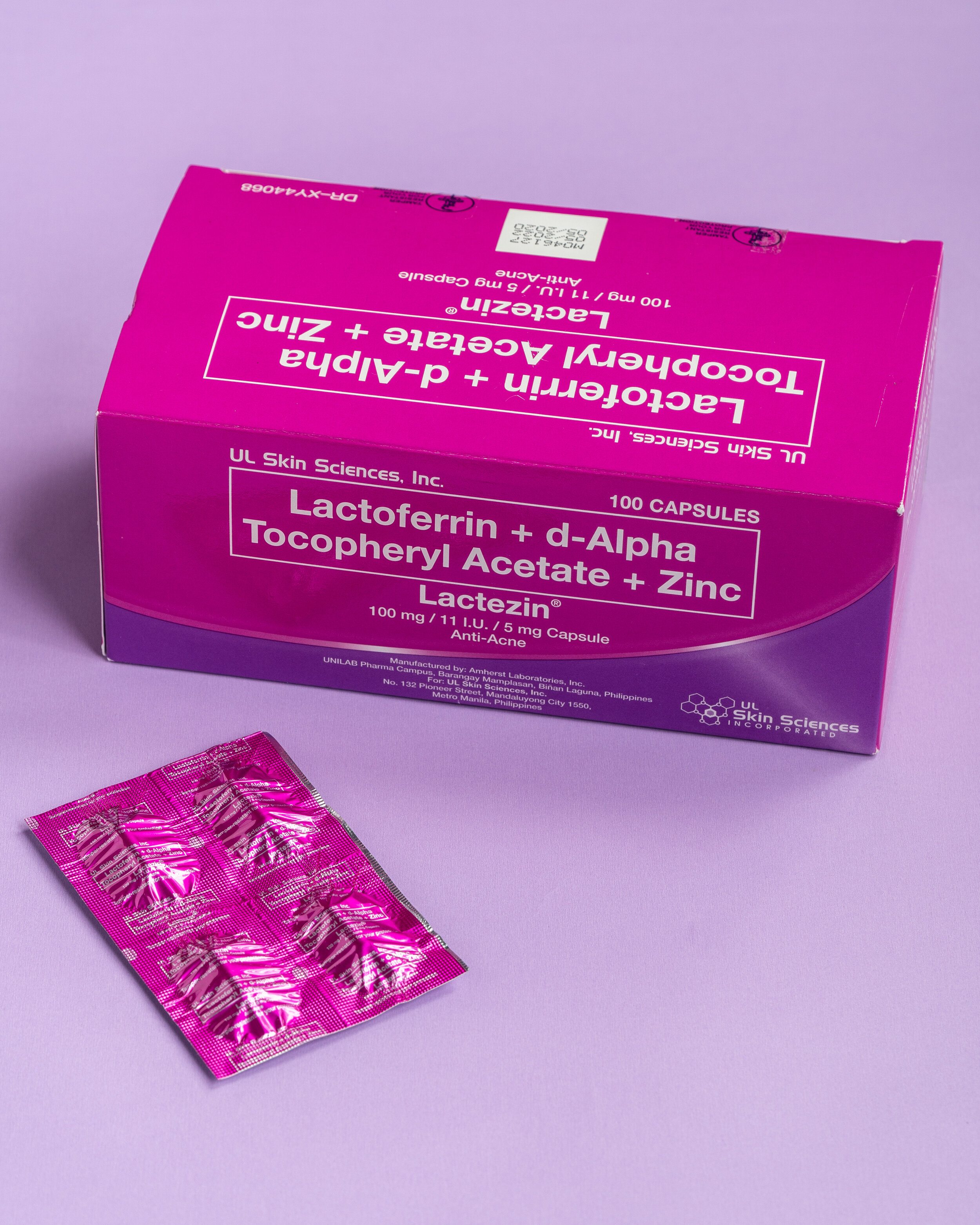Acne treatments in the new normal: Things we can do right now to help our skin
Product Photography by Perkin Gohio
This story is brought to you by Lactezin®
When it comes down to it, we have to accept that the new normal makes acne management a little trickier. The hulas mode of the daily commute and exposure to the elements have always been challenging, but we now also have the threat of maskne to contend with.
It’s about time for a refresher on how to treat acne, and we’ve got some solid tips to take to heart!
Recognize the cause. Knowing the source of the flare-ups can help you develop a methodical approach to tackling them. Is a hormonal imbalance the root of the problem? Are you guilty of not being conscientious with your cleansing ritual? Did the acne only start showing after you started wearing face masks regularly? Be proactive by assessing those possible acne triggers.
Give your beauty loot a once-over. There are so many makeup and skincare products developed and marketed for those who are oily or acne-prone. But some of those formulations contain components you’re probably better off without. Fragrances and certain types of alcohols are examples of potential irritants. The former can cause an allergic reaction, while the latter can dry you out. So rather than focusing solely on enjoyable textures and scents, take a peek at the ingredients list for the common culprits to avoid.
Inversely, you can seek out specific ingredients that are known to help skin heal or banish blemishes. Cosmetic ingredient database websites such as Paula’s Choice or CosDNA break down the purpose of each component and specify whether it’s good or bad for the skin.
Beef up your moisture barrier. One of the most common and prevailing misconceptions about having oily skin is that you can afford to skip the moisturizer. But the reality is that “stripped” skin actually exacerbates the problem by signaling your sebum glands to work overtime and produce more oil. Get them to chill out by opting for lightweight, hydrating products. Gel-type serums and moisturizers are the ideal compromise for those who aren’t used to richer formulas. You can also try experimenting with skincare layering, choosing thinner formulas that gradually “stack” together.
Mask wisely. Since protective face masks are non-negotiable these days, choose ones that feel comfy and fit well. Ill-fitting ones worn for prolonged periods can cause excessive friction and pore blockage. That’s how maskne is triggered. Luckily, there’s no shortage of beautifully designed non-medical face masks to choose from!
Don’t skip out on the vitamins and supplements.
A nutrient deficiency can show up on your skin in many forms such as dullness, flakiness, and, yes, being more prone to acne. So aside from taking your vitamins regularly and sticking to a healthy diet, you can take an oral anti-acne treatment to help fight acne from the inside.
Lactezin® is an over-the-counter drug that has been clinically-tested. It contains sebum- and inflammation-reducing Lactoferrin, Vitamin E that helps keep skin cells in good shape, and oil-regulating + immune system-boosting Zinc. When taken 2x daily, the appearance of pimples can start lessening in as early as 2 weeks. (SRP is at P27 per capsule.) Of course, we recommend consulting with your doctor first, to find out if it’s compatible with you and any other medication you may be taking.
How are you handling acne in the new normal?


